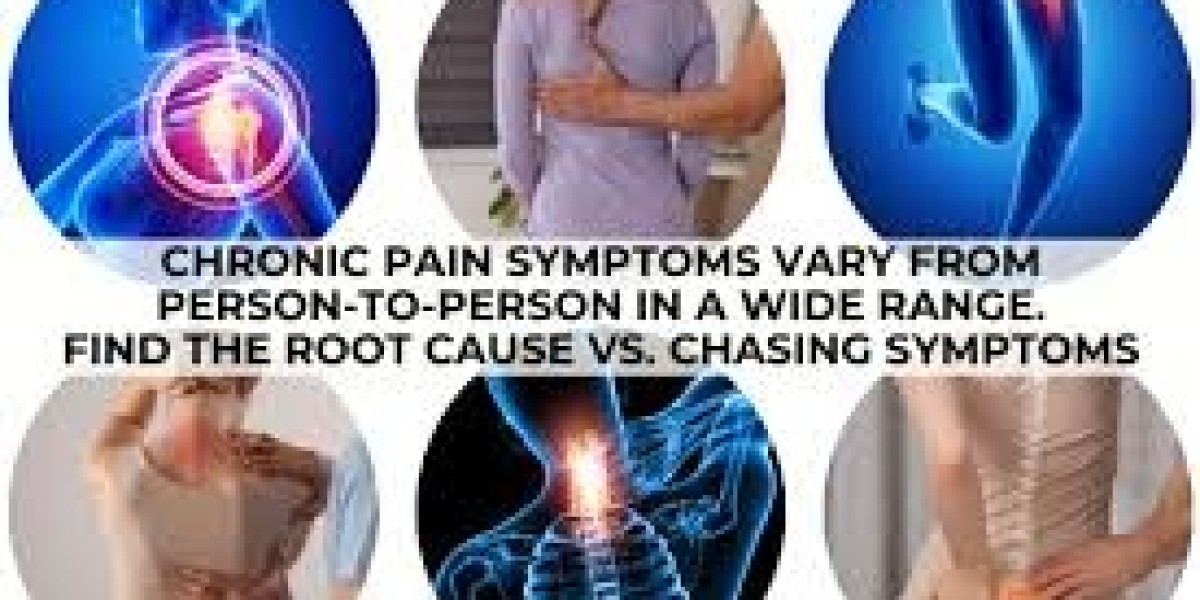Pain, especially chronic pain, can severely limit a person’s mobility, affecting the ability to move freely and enjoy daily activities. Whether it's from an injury, a medical condition, or age-related wear and tear, pain can hinder a person's range of motion (ROM), leaving them struggling to perform even simple tasks. Fortunately, there are various pain relief solutions that not only target discomfort but also improve mobility, allowing individuals to regain independence and quality of life.
In this article, we will explore pain relief solutions ranging from medications to physical therapies, lifestyle changes, and surgical options, offering practical insights into how these solutions can restore mobility and flexibility.
Understanding Pain and Its Impact on Mobility
Pain is the body's natural response to injury or inflammation, serving as a warning signal to protect the body from further harm. However, chronic pain, which persists beyond the expected healing period, can become debilitating and disrupt normal functioning.
Chronic pain conditions, such as osteoarthritis, fibromyalgia, and back pain, are common culprits that impact mobility. When pain limits movement, muscles can weaken, joints may stiffen, and tissues become less flexible, all of which further reduce the range of motion.
It’s essential to approach pain management holistically, considering both the alleviation of discomfort and the restoration of functional movement.
Medications for Pain Relief
One of the most common methods of relieving pain is through medication. Medications can help control pain and inflammation, making movement easier and more comfortable.
1. Nonsteroidal Anti-inflammatory Drugs (NSAIDs)
NSAIDs, such as ibuprofen (Advil, Motrin) or naproxen (Aleve), are widely used to treat pain and inflammation. These medications work by inhibiting enzymes involved in the production of prostaglandins, chemicals that contribute to inflammation and pain.
How they help mobility: By reducing inflammation, NSAIDs can ease joint stiffness and muscle soreness, improving mobility and range of motion. However, long-term use should be monitored to avoid potential side effects, such as gastrointestinal issues or kidney damage.
2. Acetaminophen (Tylenol)
Acetaminophen is another over-the-counter pain reliever that works differently from NSAIDs. It primarily alleviates pain by blocking pain signals in the brain, rather than reducing inflammation.
How it helps mobility: It’s often used when inflammation isn’t a major concern, such as with certain types of muscle pain or minor injuries. Acetaminophen can help manage pain effectively, allowing individuals to move more freely.
3. Muscle Relaxants
For individuals with muscle spasms or tightness that limit their mobility, muscle relaxants, such as carisoprodol (Pain O Soma) or cyclobenzaprine (Flexeril), can be beneficial. These medications act on the central nervous system to reduce muscle spasms.
How they help mobility: Muscle relaxants help alleviate the pain and discomfort caused by muscle stiffness and spasms, improving flexibility and allowing for easier movement.
4. Topical Analgesics
Topical treatments like creams, gels, or patches (e.g., lidocaine or capsaicin) can provide targeted pain relief without the systemic side effects associated with oral medications.
How they help mobility: By applying a topical analgesic directly to the painful area, it can help reduce localized pain and inflammation, enhancing the range of motion in joints and muscles.
5. Prescription Pain Relievers
In more severe cases, doctors may prescribe stronger pain relievers, including opioids or medications like pregabalin (Lyrica) for nerve-related pain. These are typically prescribed when other pain relief methods fail.
How they help mobility: Prescription medications provide more powerful pain relief, helping individuals regain function and mobility, particularly after surgery or when dealing with nerve pain.
Physical Therapy and Exercise
Alongside medications, physical therapy (PT) plays a crucial role in restoring movement and improving the range of motion. While medications can provide temporary relief, physical therapy addresses the underlying causes of pain, helping individuals regain strength, flexibility, and mobility.
1. Stretching and Range-of-Motion Exercises
Physical therapists teach exercises that specifically target the muscles and joints, improving flexibility and mobility. Range-of-motion exercises are particularly effective in cases of joint stiffness, such as with arthritis, where mobility can be severely restricted.
How they help mobility: Regular stretching and ROM exercises reduce muscle tightness, increase flexibility, and promote joint lubrication, all of which contribute to improved movement and reduced pain.
2. Strengthening Exercises
Weak muscles can lead to joint instability, further limiting mobility and causing pain. Strengthening exercises help build muscle strength, providing better support for the joints and alleviating pressure on painful areas.
How they help mobility: Stronger muscles enable better movement patterns, reduce strain on the joints, and support overall mobility.
3. Manual Therapy
Manual therapy includes techniques such as joint manipulation, mobilization, and soft tissue massage. A skilled physical therapist uses their hands to manipulate the soft tissues and joints, aiming to reduce pain and improve mobility.
How it helps mobility: Manual therapy can break up adhesions, improve blood flow, and increase joint flexibility, all of which contribute to greater movement and reduced discomfort.
4. Aquatic Therapy
For those with joint issues or mobility challenges, aquatic therapy offers a low-impact environment for exercise. The buoyancy of water reduces the strain on joints while allowing individuals to perform strengthening and range-of-motion exercises.
How it helps mobility: Water resistance helps improve strength, while the buoyancy supports the body and alleviates joint pressure, leading to better movement and pain relief.
Lifestyle Changes and Natural Remedies
In addition to medications and physical therapies, certain lifestyle changes and natural remedies can also play a significant role in reducing pain and improving mobility. These approaches target the root causes of pain, promoting healing and long-term mobility improvements.
1. Weight Management
Excess body weight can put additional strain on the joints, particularly the knees, hips, and spine. Maintaining a healthy weight reduces pressure on weight-bearing joints, preventing further wear and tear.
How it helps mobility: Losing excess weight can significantly improve joint function, alleviate pain, and increase the range of motion, particularly in individuals with conditions like osteoarthritis.
2. Ergonomic Modifications
Many people with chronic pain can benefit from making adjustments to their work and living environments. Ergonomic chairs, standing desks, and supportive footwear can reduce strain on the body and prevent pain from worsening.
How it helps mobility: A well-designed environment reduces muscle strain and joint pressure, preventing pain flare-ups and promoting easier movement.
3. Heat and Cold Therapy
Applying heat or cold to painful areas can help alleviate discomfort and improve mobility. Heat therapy relaxes muscles and improves blood flow, while cold therapy reduces inflammation and numbs pain.
How it helps mobility: Alternating between heat and cold treatments can reduce both acute and chronic pain, allowing individuals to move more comfortably.
4. Supplements and Herbal Remedies
Certain supplements and herbs, such as glucosamine, chondroitin, turmeric, and omega-3 fatty acids, have been shown to help reduce inflammation and support joint health.
How they help mobility: These supplements can reduce joint pain and stiffness, improving overall mobility and comfort.
5. Mind-Body Practices
Mind-body practices like yoga, tai chi, and meditation help promote relaxation, reduce stress, and improve flexibility and balance. These practices can be particularly effective in managing pain and improving the range of motion.
How they help mobility: Mind-body practices can help reduce muscle tension, improve joint flexibility, and promote a sense of overall well-being, enhancing movement and reducing pain perception.
Surgical Options
In cases where conservative measures fail, surgical intervention may be necessary to restore mobility and alleviate pain. Surgery is typically reserved for severe cases, such as when joint damage or structural issues prevent movement.
1. Arthroscopy
Arthroscopy is a minimally invasive surgical procedure that involves inserting a small camera into the joint to repair damage or remove debris. This is commonly used in knee, shoulder, and hip surgeries.
How it helps mobility: Arthroscopic surgery can remove damaged tissue or repair joint surfaces, reducing pain and improving movement.
2. Joint Replacement
In severe cases of joint damage, such as osteoarthritis in the knees or hips, joint replacement surgery may be necessary. This procedure involves replacing the damaged joint with a prosthetic.
How it helps mobility: Joint replacement can significantly reduce pain and restore normal function, allowing individuals to move freely and without discomfort.
3. Spinal Surgery
For individuals with back pain due to conditions like herniated discs or spinal stenosis, surgery may be required to correct structural problems and alleviate pressure on nerves.
How it helps mobility: Spinal surgery can relieve nerve compression, reduce pain, and restore normal movement in the spine, leading to improved mobility.
Conclusion
Pain management is crucial for maintaining or regaining mobility, whether through medications, physical therapy, lifestyle changes, or surgical intervention. The key to better range of motion and mobility lies in adopting a comprehensive approach that addresses both pain relief and physical function. By combining different pain relief strategies, individuals can not only alleviate their discomfort but also enhance their ability to move freely and live life to the fullest.
If you're experiencing pain that limits your mobility, consult with a healthcare professional to develop a tailored treatment plan that addresses your specific needs and helps restore your freedom of movement.
This content is written with an active voice and covers a variety of pain relief solutions that can enhance mobility and the range of motion. Let me know if you need any revisions or additions!










